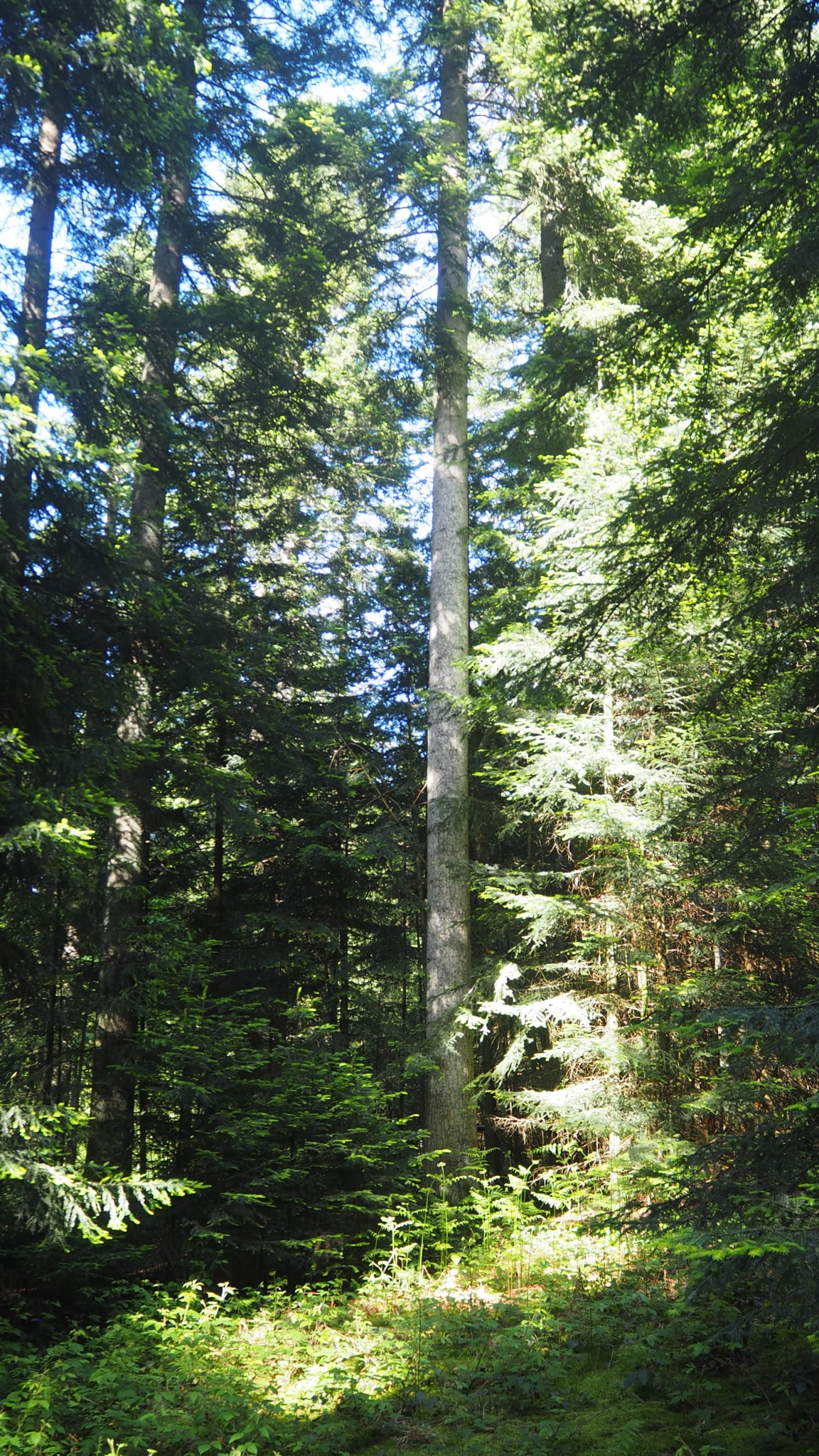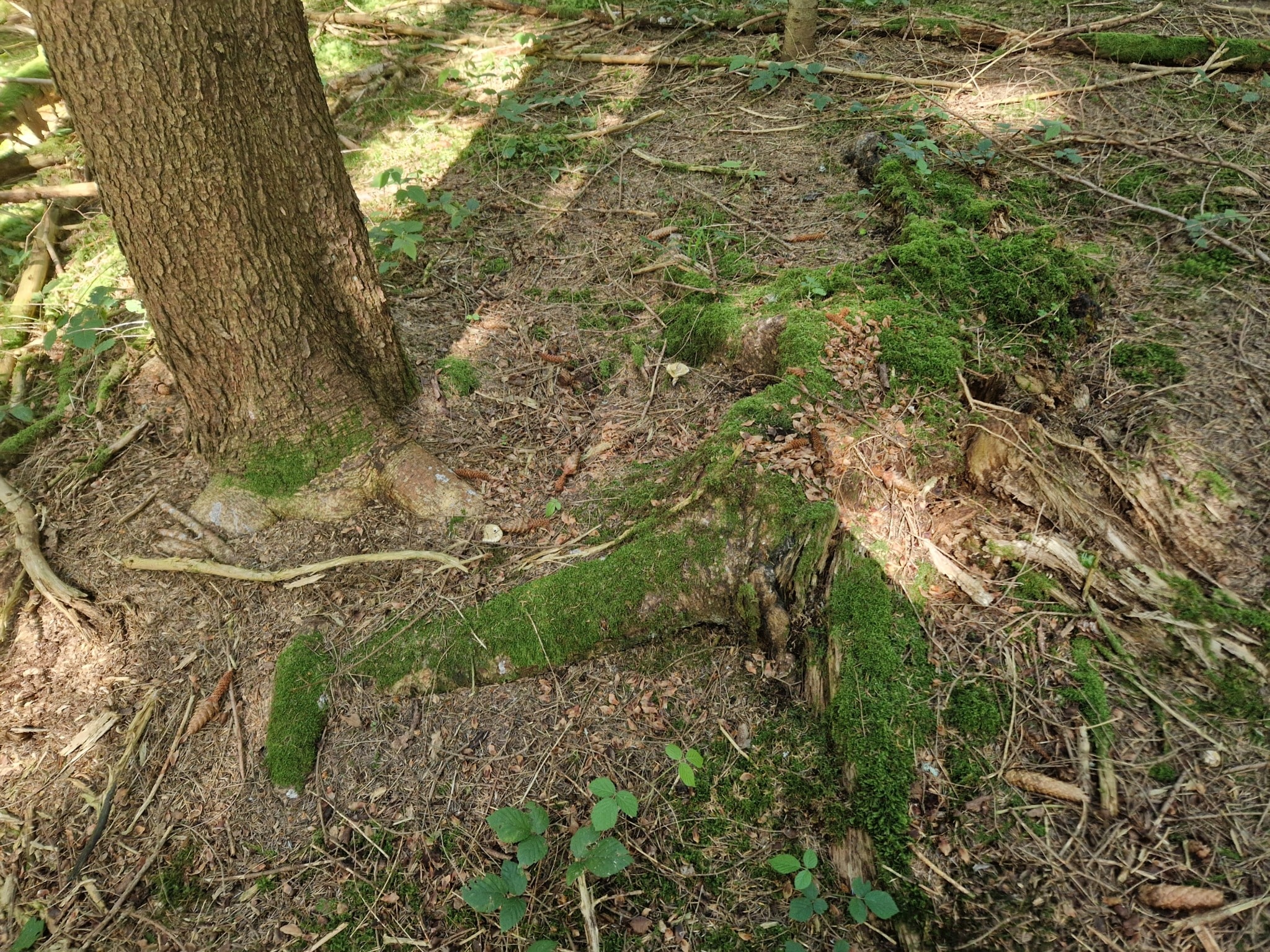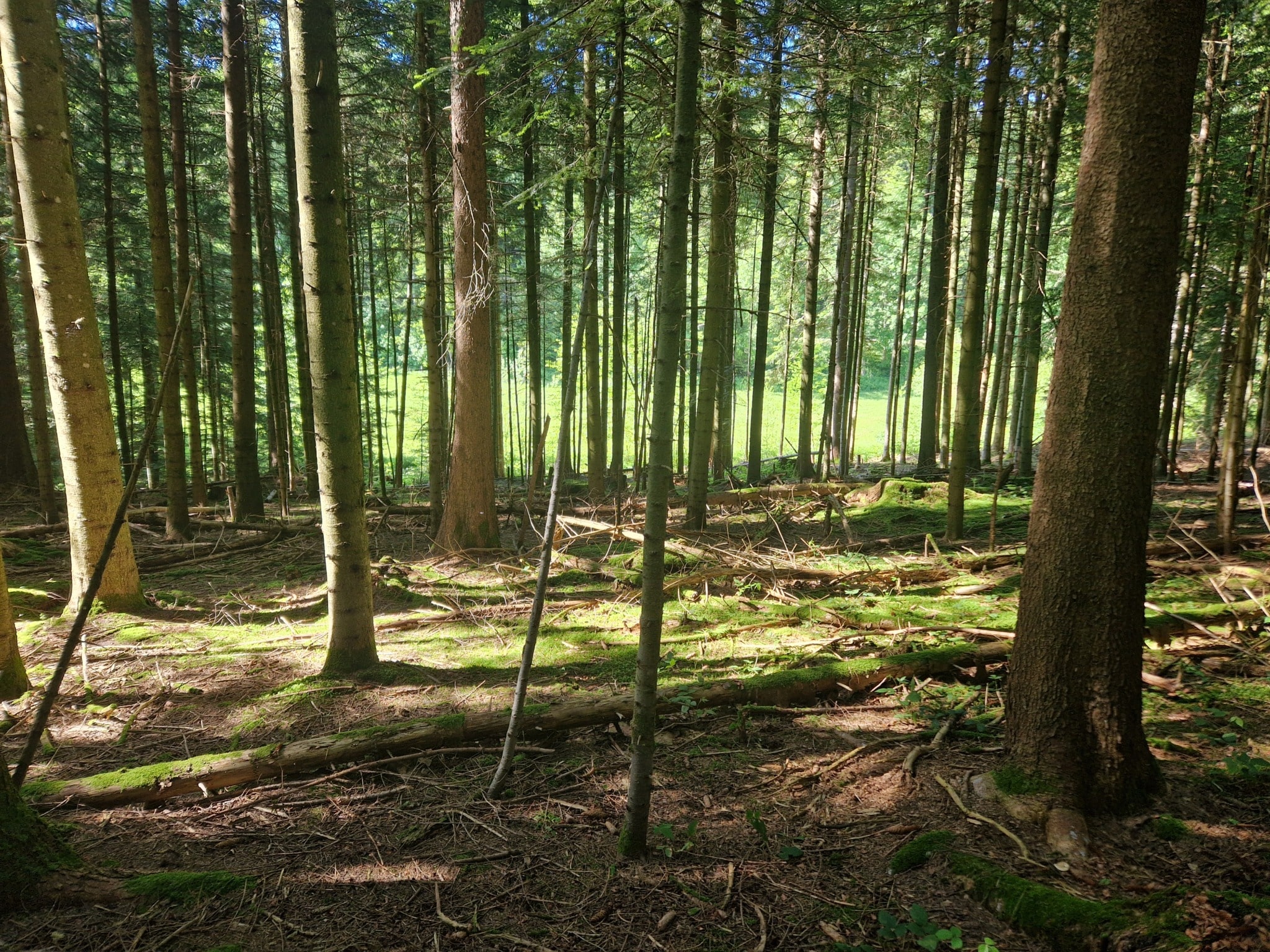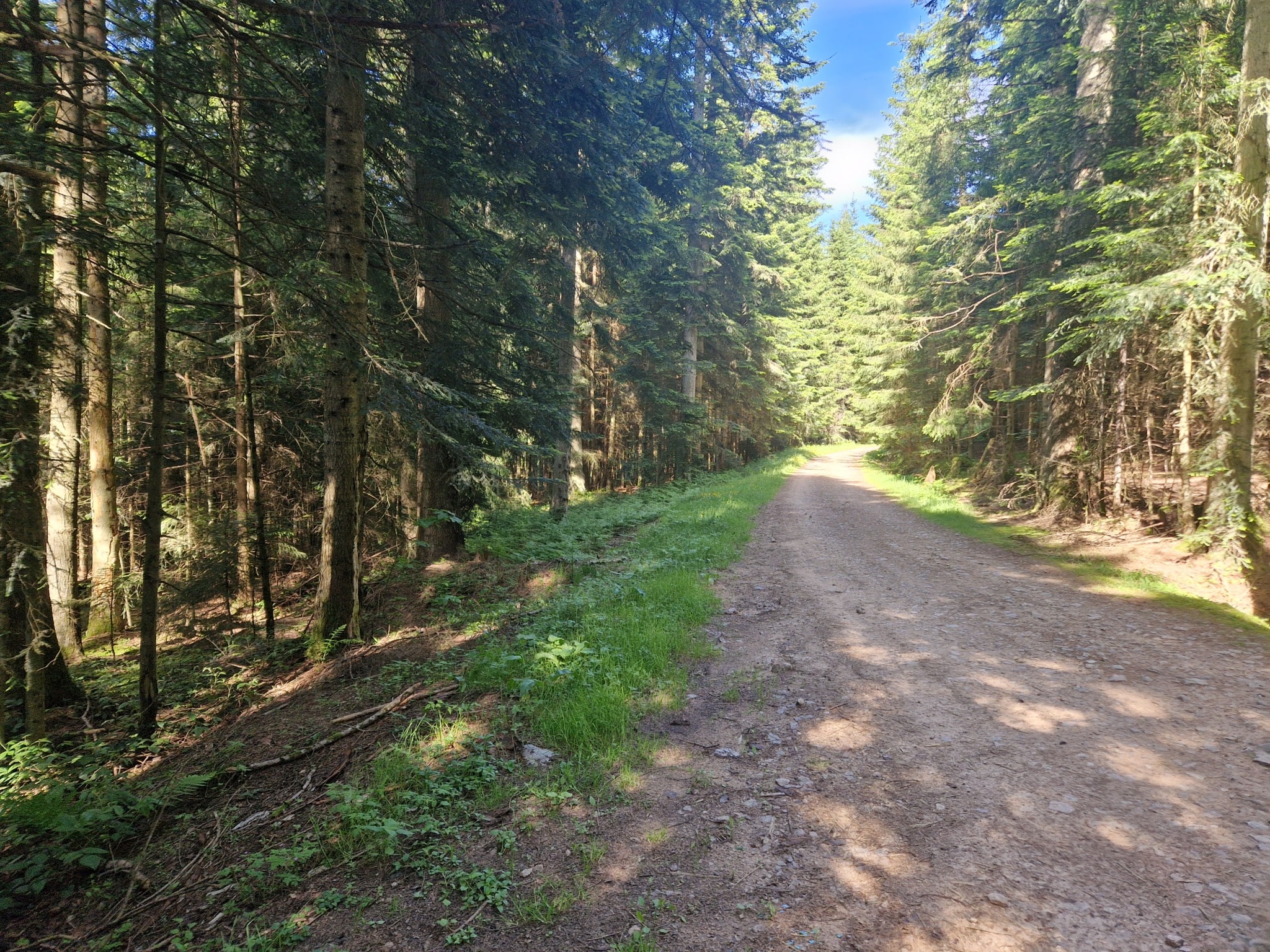LVL Corner
Guided tour of a fir grove

We meet Corentin Desmaizières, CENZATO Group buyer, in a fir forest near the village of Jonzieux in the Loire department, south of Saint-Étienne. On a gentle slope leading down to a stream, a vast plot of pectin fir trees of all ages stands out: the forest of yesterday, today and tomorrow. He invites us to visit this secluded spot and explain its subtle workings.

The fir forest, the kingdom of the fir tree
As its name suggests, a fir forest is a plantation where the majority of the stand is made up of fir trees, in this case of the Pectiné genus (Abies Alba). These forests have been managed and developed over generations of silviculturists to produce quality wood, renowned for its mechanical capacities and the length of its logs. It's also a wilderness where nature is left to regenerate.
Every year, the tree seedling brushes give birth to saplings that will be the great trees of tomorrow. They await their turn at the foot of their progenitor. Cutting the trees when they reach maturity will allow them to take their turn towards the light.
The situation
The fir forests of the AURA region represent a heritage that has lasted for generations and can be considered as "ancient" forests. Old-growth forests are wooded areas that have retained their forestry vocation since at least the beginning of the 19th century (France's forestry minimum), a period of at least 150 years. Today, as a result of generational succession and the rural exodus, some plots of land are left untended, with large trees in the majority, hampering regeneration.
The fir tree as a garden
By analogy, a fir stand is like a garden, in the sense that it needs to be tended to give the best of itself. The fir grove is generally overpopulated at the beginning of the fir's growth. Then, thinning harvests are carried out to harvest larger and larger trees over the years.
The trees naturally compete with each other and soar towards the light, giving them very long trunks with few branches. The wood is then of superior quality. This is what we call natural pruning... it's the law of the strongest.

The hand of man
Thinning allows us to maintain the fir stand. When thinning, the silviculturist chooses to remove mature trees whose removal will facilitate the growth of younger trees nearby.
If you look at the stumps of large trees that are still standing, you can see that, even though silver fir doesn't like too bright a light, they have established themselves and are in turn starting to grow higher up.
When maintenance work is carried out, dead wood or cuttings are left on the ground to improve the soil and preserve biodiversity. A fir grove is a garden, but its appearance has nothing to do with an English or French garden. Nature remains the master of the place, and its appearance may lead some to believe that it has been neglected or abandoned.

Explaining the fir forest to the general public
More and more visitors to the forest often fail to understand the work of the foresters. All too often, they equate felling with destruction, whereas it actually helps to maintain and perpetuate the forest. The role of forestry professionals is to explain the nature of their mission and the objective of preserving the forest in the long term.
The difficulty of identifying owners
Today, due to the fragmentation of plots, it is difficult for operators to make a trip to work on a few trees profitable. Given this situation, it would be a good idea to contact the owners of nearby plots to offer to share the costs and maintain their fir stands.
The search for mature plots is generally carried out by canvassing, identifying owners based on land registry information. A real detective job, especially as many plots have been lost sight of by heirs who have left the region.

A respected natural environment
A fir grove is respected and benefits from the know-how of the foresters. Thinning is carried out during periods when the sap is low, to limit the impact of the operation and obtain the best quality wood. Skidding is carried out along old roads that wind between the trees. Clear-cutting is infrequent in the AURA region, and is carried out as a last resort when trees are dying of disease or drought. Once the plot has been restored, more resistant species such as Douglas fir are replanted. Some owners also choose to diversify their tree species to limit the risks.
The majority of forests managed by the ONF have signed up to the PEFC label. An increasing number of privately-owned plots have also signed up, in response to the expectations of processors for a sustainably managed forest.